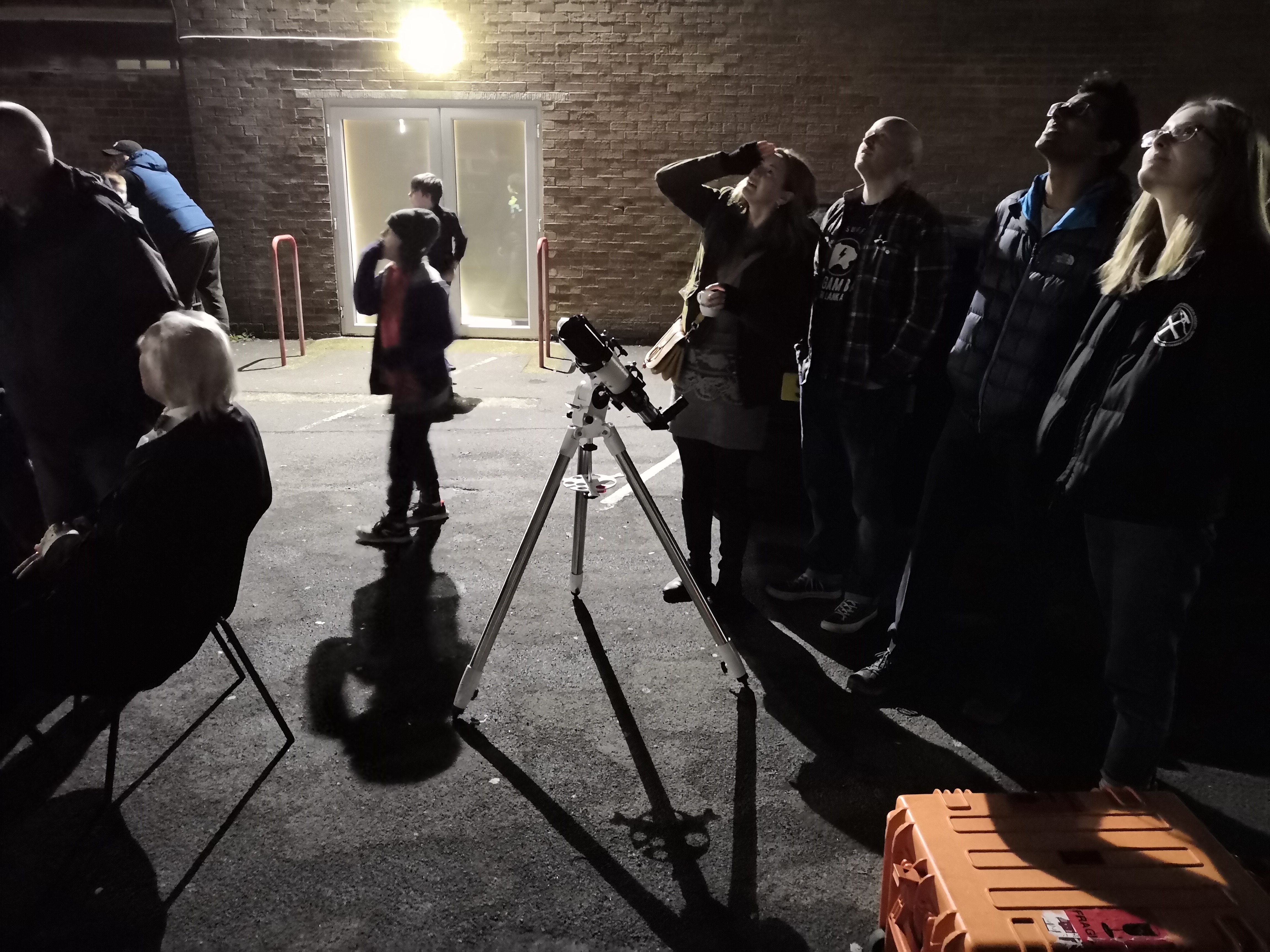
On Wednesday 27th March, we held our long-awaited Iris Festival of Natural History, Classics, Art & More at Cheney. For a few hours, Cheney School’s site was entirely transformed with the arrival of animatronic dinosaurs, tarantulas, ball pits, sundials, birds of prey, a storytelling tent, and many other unexpected and thrilling exhibits.
The Festival was a celebration of the Rumble Museum at Cheney, the first museum in a state school, and its journey towards Arts Council Accreditation, and over fifty different organisations travelled from near and far to run a very wide range of exciting stalls, activities, exhibitions and shows. The event was split into five main discovery zones. In the Science and Natural History zone, Cheney students and visitors explored spiders webs, fossils, botany and dragonflies, brought by the Cole Museum, Brookes Botanical Society, Natural History Museum in Oxford, University of Oxford Department of Zoology, the British Dragonfly Society and the Dinosaur Society. The Travelling Natural History Museum brought a range of models, and also two huge animatronic dinosaurs, who thrilled visitors with a show every half an hour! Millets Falconry brought beautiful owls which attracted a constant crowd of admirers.
 On Monday 3rd June, a group of Year Eight history students had the opportunity to visit the Oxford Brookes University Archive, as part of a Rumble Museum project exploring the connections between John Brookes, Oxford Brookes University and Cheney School, culminating in a Story and Artefact Collection afternoon for alumni students and staff on 28th June. The students were met by archivist Eleanor Possart, who introduced the archives, explaining what sort of things they collected, and how the rooms were specially controlled in terms of their temperature and other aspects to preserve the valuable material.
On Monday 3rd June, a group of Year Eight history students had the opportunity to visit the Oxford Brookes University Archive, as part of a Rumble Museum project exploring the connections between John Brookes, Oxford Brookes University and Cheney School, culminating in a Story and Artefact Collection afternoon for alumni students and staff on 28th June. The students were met by archivist Eleanor Possart, who introduced the archives, explaining what sort of things they collected, and how the rooms were specially controlled in terms of their temperature and other aspects to preserve the valuable material.  The Rumble Museum at Cheney is delighted to be supporting the Oxfordshire Hospital School as it embarks upon an exciting museum project over the next few months. The Rumble Museum will work with the team at the Hospital School as it develops in-house displays of museum objects, and projects connected to these displays.
The Rumble Museum at Cheney is delighted to be supporting the Oxfordshire Hospital School as it embarks upon an exciting museum project over the next few months. The Rumble Museum will work with the team at the Hospital School as it develops in-house displays of museum objects, and projects connected to these displays.  We have been very fortunate to have been donated some large pieces of a Roman Kiln which was excavated from the Churchill Hospital in Oxford in 1972. For many years, the Kiln has been housed at the Museum of Oxford in the Town Hall.
We have been very fortunate to have been donated some large pieces of a Roman Kiln which was excavated from the Churchill Hospital in Oxford in 1972. For many years, the Kiln has been housed at the Museum of Oxford in the Town Hall.



 This Friday 2nd November, the Rumble Museum held its second digital collection day. The day was held in partnership with the University of Oxford, as part of their national
This Friday 2nd November, the Rumble Museum held its second digital collection day. The day was held in partnership with the University of Oxford, as part of their national  On Friday 30th November, 31 Year Eight Classics and Museum students set out to visit the Oxford's world-renowned Natural History Museum!
On Friday 30th November, 31 Year Eight Classics and Museum students set out to visit the Oxford's world-renowned Natural History Museum! We were very privileged to have been able to welcome Professor Sally Shuttleworth and Dr Catherine Charlwood from the University of Oxford Humanities Centre (TORCH) to introduce an exciting project on the theme of 'Diseases of Modern Life' to Year Eight students a few weeks ago, which culminated last night in Year Eight artwork, poetry and other responses being projected at Victorian Night Light as part of the Oxford Christmas Lights Festival.
We were very privileged to have been able to welcome Professor Sally Shuttleworth and Dr Catherine Charlwood from the University of Oxford Humanities Centre (TORCH) to introduce an exciting project on the theme of 'Diseases of Modern Life' to Year Eight students a few weeks ago, which culminated last night in Year Eight artwork, poetry and other responses being projected at Victorian Night Light as part of the Oxford Christmas Lights Festival. Year Eight History students were privileged to welcome University of Oxford researcher, Hanna Smyth, to introduce the exhibition that she has been helping to create:
Year Eight History students were privileged to welcome University of Oxford researcher, Hanna Smyth, to introduce the exhibition that she has been helping to create:  We have been running new anthropology workshops at the Rumble Museum to engage students in our collections and in our Living Museum project.
We have been running new anthropology workshops at the Rumble Museum to engage students in our collections and in our Living Museum project.